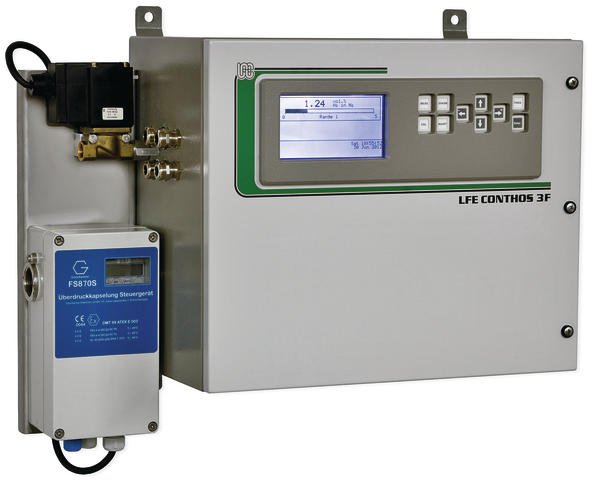The Conthos gas analyser is now in its third generation. The strengths of its predecessor have been carefully maintained and a considerable number of improvements implemented at the same time. The manufacturer´s primary emphasis was on optimising the internal design and the software. The overall result is very high measurement stability.
Author Gary Brown Managing Director, LFE Prozess-Analysenmesstechnik
Like its predecessors the third generation is characterised by exceptionally long-term stability, quick response time (typically 2 s), high flow-rate independence and high corrosion resistance of components in contact with the sample gas.
In conventional gas analysers utilising the principle of thermal conductivity a heated object is suspended in a volume containing the sample gas. Electrical energy passed through the object results in it heating up and attaining an equilibrium temperature which is primarily dependent upon the thermal conduction properties of the surrounding gas. This temperature is normally measured directly as a change in the electrical resistance of the heated object itself.
LFE’s principle modifies this classical method by spatially and electrically decoupling the heated element from the temperature sensing element. The specially designed geometry of the TCD cell in conjunction with the decoupling effectively suppresses undesired, competing thermal effects (i. e. free and forced convectional effects). The result is a detector the quick, stable response of which requires no compromise between gas flow and response time.
The analyser measures the concentration of a particular gas component in binary and quasi-binary gas mixtures. For applications involving multiple components the inherent non-selectivity of the thermal conductivity principle can be suppressed by employing dynamic interference correction methods. In special cases the selection of a particular TCD operating temperature can provide sufficient interference suppression. This is facilitated by the unusually large range of the Conthos TCD operating temperature. The device allows up to three independently configurable, linearised measuring ranges, including suppressed ranges. Range switching can be accomplished manually, automatically (auto-ranging) and/or remotely via the optional digital I/O interface.
The instrument can be calibrated in various ways: manually (1- or 2-point calibration with offset/span) or automatically/semi-automatically in conjunction with the optional digital I/O board or RS-485 module.
The Conthos provides three computational channels for static or dynamic interference correction (dynamic correction only in conjunction with the optional analogue input board or RS-485). The standard sample gas connectors used are Swagelok (SS 316) for 6 mm or ¼” tubing and NPT ¼” female connectors. PFA connectors are optionally available for enhanced corrosion resistance. The standard gas lines within the analyser are made of PTFE. Metal piping can also be supplied as an option.
Many possible variants
The instrument has an LC display with a multilingual user interface based on Namur recommendations, which additionally reports the analyser status in plain text. Easy and flexible integration into existing or new installations is facilitated by numerous standard or optional analogue and digital inputs and outputs. Amongst other things, the instrument interface consists of two independently configurable, isolated analogue outputs, digital outputs via floating relay contacts for collective status reporting (instrument fault/maintenance required/maintenance) as well as three optional isolated and configurable analogue inputs utilised for dynamic interference correction. Expansion modules are optionally available for digital I/Os (8 further configurable digital inputs and 7 configurable outputs) as well as an RS-485 interface with Modbus protocol.
cpp-net.com/0214403
Share:







